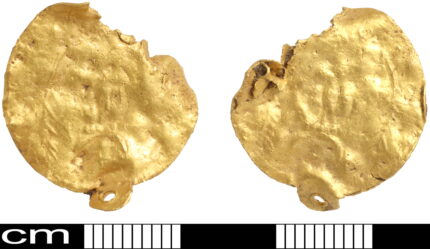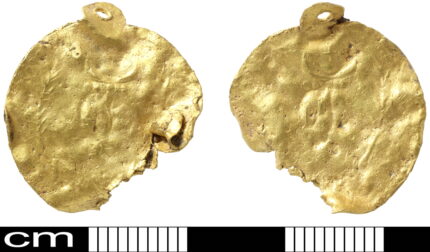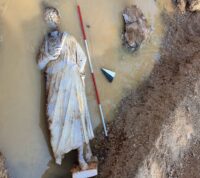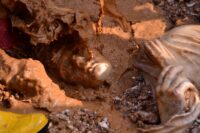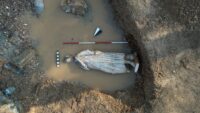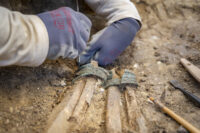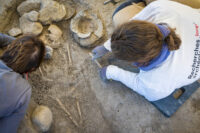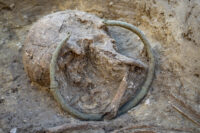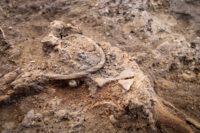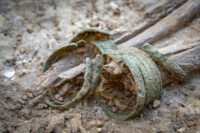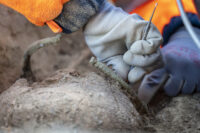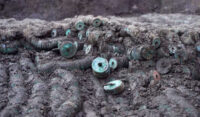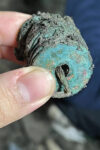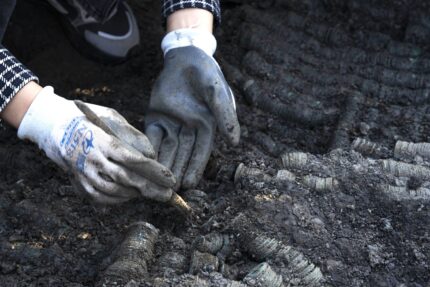A Roman gold earring discovered by a metal detectorist in Burston, Norfolk, last Christmas Eve, has been declared treasure and will go on display at the Diss Museum, an award-winning local museum occupying two former historic butcher shops in Norfolk. This small gold disc weighing a total 2.2 grams is also helping archaeologists redefine earlier such discoveries.
When Nick Bateman first unearthed the earring in a field, he thought it was an old bottle cap. When he cleaned it a little he saw that it was gold and definitely not a bottle cap. He reported it to the authorities and the piece was examined by a coin expert from the Norfolk Historic Environment Service.
The earring is circular, 20.5 mm (.8 inches) in diameter and was formed by two gold sheets of different thicknesses soldered together. Both sides are decorated with a relief in repoussé technique (pushed out from the back) of what appears to be an eagle on a ground line formed of six dots on top of a downward-pointing crescent. The eagle is encircled by a wreath and a cross is visible between the points of the crescent on one side of the earring. It is no longer visible on the other side, but must have been there originally as the decoration is the same on both sides.
There is a d-shaped projection with a perforation, but it is not at the top of the pendant. It is at the bottom, a suspension loop for a secondary pendant hanging from the gold disc. Part of the top side of the earring is missing. This damaged area must have been perforated or otherwise contained the mount which would have hung from the ear.
There are no exact matches for this design on the archaeological record. A similar gold disc formed by two thin gold sheets joined together and decorated with a repoussé relief is the closest cognate. It too was found in Norfolk and it was crumpled, but it has no pendant loop and the decoration is so hard to make out that it was categorized as an unknown with a few superficial features in common with Anglo-Saxon bracteate pendants. The discovery of the earring has now resulted in its unknown cousin being dated to the Roman period (43-409 A.D.), and similar finds are also being reevaluated in the wake of the Burston piece.
“A colleague thought it was medieval as he could see a tiny cross under one of the loops,” [numismatist Adrian Marsden] said.
“But when I looked closely I could see a laurel wreath and an eagle and that’s exactly the sort of thing you get on Roman objects.
“Other artefacts like this had gone down as medieval, so it does show you need to keep your wits about you when you examine these things.”
